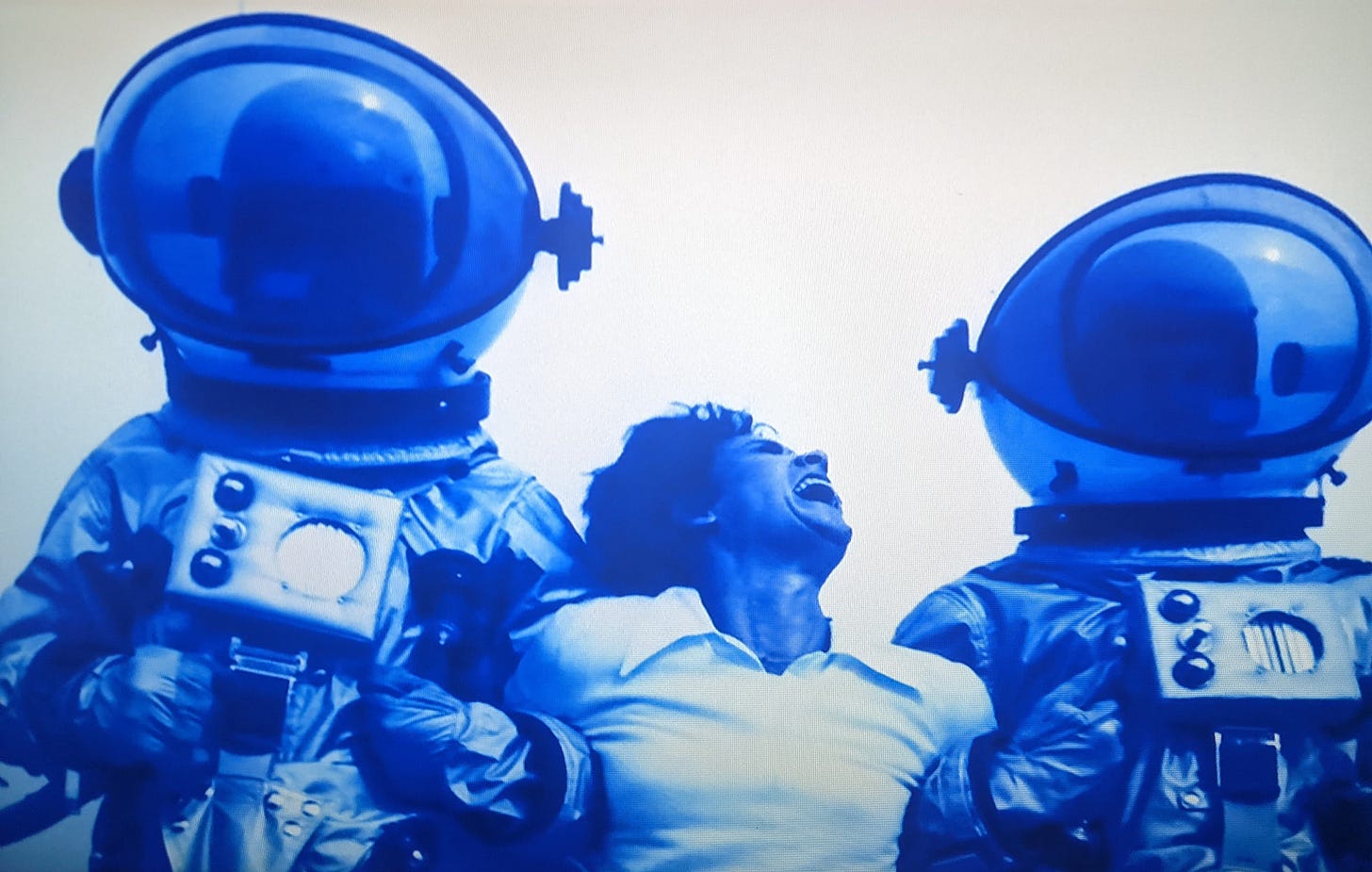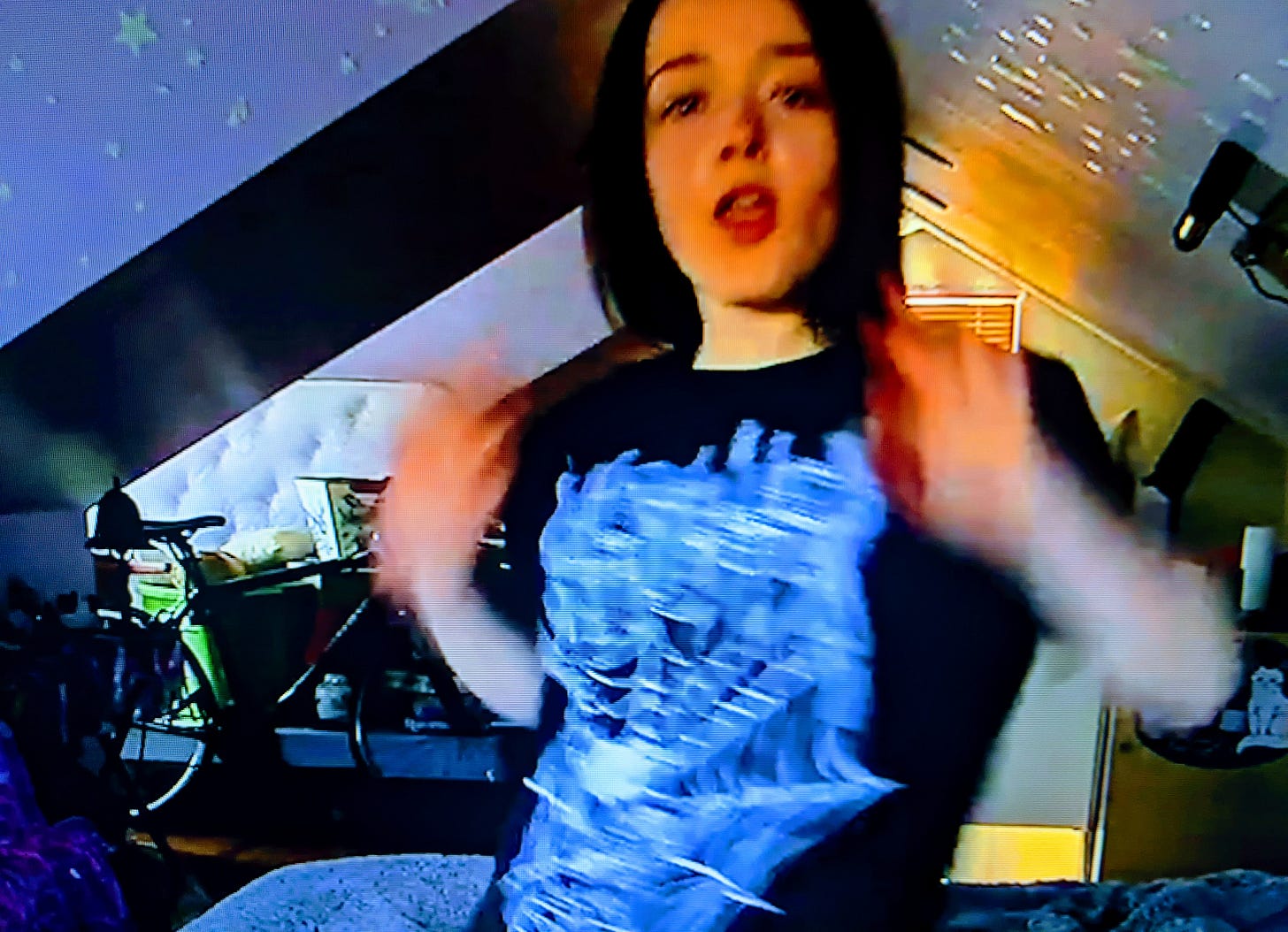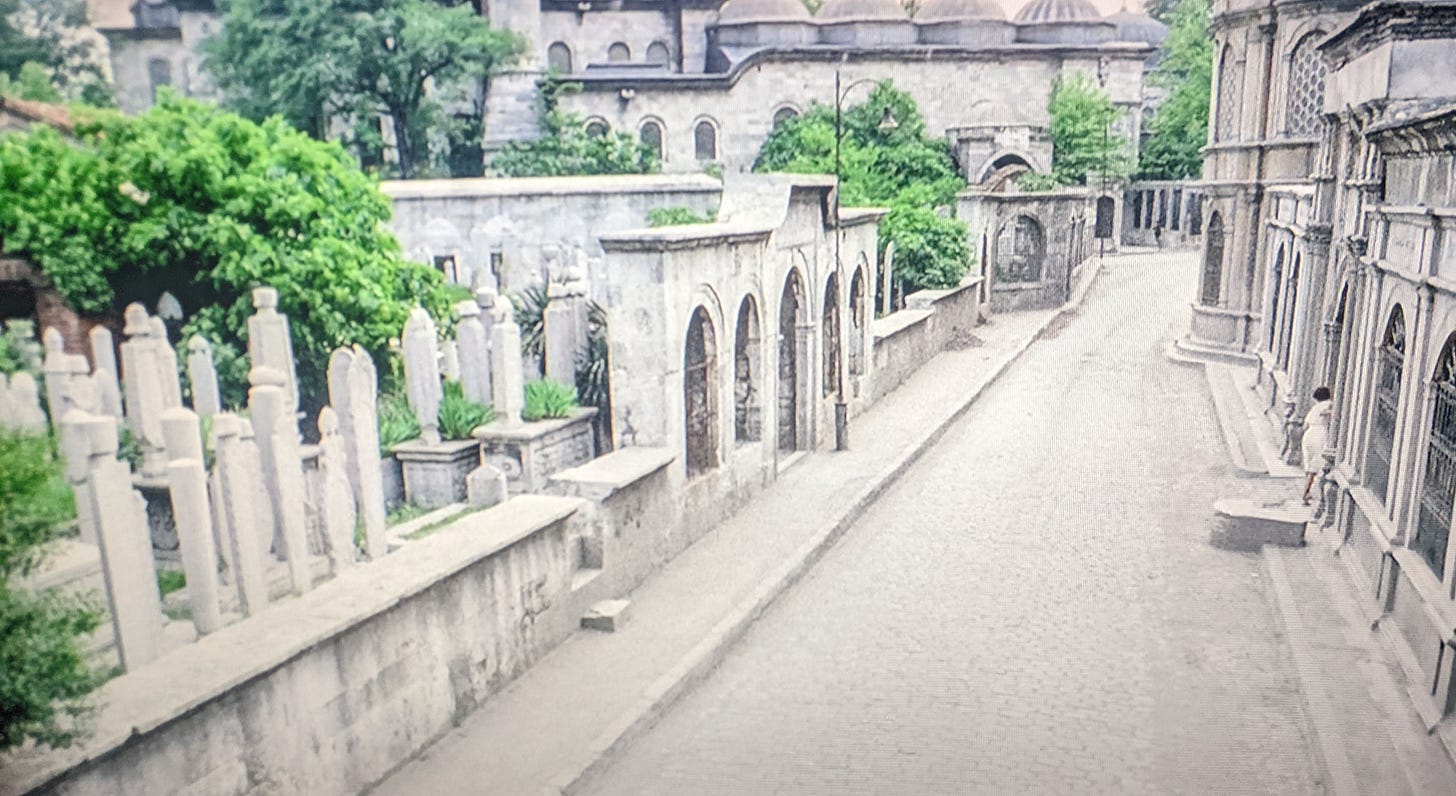Footprints to the World's Fair: Two Films About Genre and Trauma
A double bill gone accidentally right leads to thoughts on the relationship between genre storytelling and mental health
“It sounds exactly like science-fiction.”
“It was.”
Footprints on the Moon
Sometimes you accidentally get a double bill just right. If you’re a regular home movie watcher you know the feeling: two seemingly random films that have been floating around your ‘must watch’ list, finally find their time and, quite unexpectedly, start talking to each other in interesting ways. Sometimes you have to force the correlations a bit, others it’s a question of a certain nebulous ‘vibe’, and on rare occasions the connections are not just obvious, but serve to illuminate both films in ways perhaps not intended by their creators.
A recent double bill of We’re All Going to the World’s Fair (Jane Schoenbrun, 2021) and Footprints on the Moon (Luigi Bazzoni, 1975) was among the latter examples. Two films that I’d been meaning to watch for ages that are now, to my mind, inextricable from each other for providing insights into similar states of mental crisis, albeit in styles that are very different. Both of which reflect something back to me that’s recognisable, human and true.
Stylistically the two films exist at opposite poles: …World’s Fair is lo-fi and spatially constrained, taking place in teenage bedrooms, local parks, empty streets and online, with its tiny cast of characters often looking straight into the camera, forcing an intimacy. while Footprints… being an Italian thriller from the 1970s, is defined by its opulence, albeit one of a particularly wintry kind. Both films trap us in the heads of female protagonists dealing with forms of mental dislocation, both mark the transformations that this dislocation heralds, and, more surprisingly perhaps, they both focus on the role that genre fiction can take in the lives of those who have experienced traumatic events.
…World’s Fair’s Casey (Anna Cobb) is an almost stereotypically alienated American teenager. Hyper-online in a way that makes my born-in-seventy-nine mind ache, and that seemingly comes at the expense of real-time interaction (on one of the rare occasions we become aware of her father being present Casey is waiting for his footsteps to pass outside her door like a prisoner waiting for a guard to go by before resuming tunnelling). The film follows her down the rabbit hole of an online horror RPG – the ‘World’s Fair’ of the film’s title – that may or may not be compelling its players toward unsettling physical and mental transformations. By contrast Footprints…’s Alice (Florinda Bolkan) is a more bourgeois figure. She has a luxurious flat in an unspecified European city, a well-paid job as a translator, and a wardrobe of extremely stylish pant suits that lots of women would kill her for. But she’s missing days of her life for which she can’t account, and is haunted by science fiction visions of astronauts being stranded on the moon via the designs of a mad doctor (Klaus Kinski, eyes boggling).
The methods by which these protagonists attempt to solve the mysteries around them are very different: despite beginning communication with another ‘World’s Fair’ player, Casey’s search is almost entirely interior and self-examining, whereas Alice takes a trip to an unfamiliar town she’s alleged to have visited in order to question the locals and get answers; Casey goes deeper via a series of online videos documenting her transformation from a ‘normal’ teenage girl to a toy-destroying instigator of chaos, while Alice seeks to identify and extricate herself from the turmoil that surrounds her. These differences of approach basically being those of a teenager and those of someone approaching middle-age.
But the similarities are telling. Both protagonists undergo transformations that range from different hair styles and adopting unfamiliar clothing to outbursts of anger and emotional excess. Both breakdowns are hinted to be related to events beyond their control (environmental anxiety in the case of Alice and being a teenager in the fucking 21st century for Casey) and, intriguingly, for their incorporation of the cliches and frameworks of genre fiction as a way to frame their respective dislocation.
As Casey’s life spirals, her world begins to resemble a horror story in both event and aesthetic. The online game she plays, dressed as it is in some of the familiar trappings of contemporary horror, from Creepypasta to found footage (the Paranormal Activity films are referenced several times, and this is the first feature film I’ve seen to reckon with the influence of the disturbing YouTube game walkthrough Petscop), becomes a pathway toward feeling something in a world so seemingly antithetical to human life that it necessitates emotional withdrawal. By contrast Alice’s science fiction B-movie inspired visions of being stranded outside of human interaction by malevolent authority are a way of hiding her feelings and memories from herself. Both are utilising the disassociation related to unrealistic or fantastical story types as a way of coping with extreme mental distress.
Without wishing to get too personal, this is something that resonates with me. As a lover of genre storytelling and someone who has experienced problems with fluctuating mental health his entire adult life, I can attest that the ways the various cliches and tropes of fantastical fiction have danced around the edges of my illness, particularly in times of high anxiety or depression, are manifold and complicated. Sometimes providing a welcome distraction, sometimes a horrible reminder, sometimes a suit of armour. Our interactions with the fantastic are far more complicated, I think, than the zero-sum game implied by the word ‘escapism’, or even the oft-repeated cliché that horror provides a ‘safe outlet’ for us to deal with repressed fear. For me, neither explanation comes close to summing up and separating the strands that make up the swirl of conflicting emotions I feel when I’m pushed to the edge of my wits by an effective horror film, or awed by an immaculately realised future world.
And I’m not alone, if the resurgence of popularity in genre fiction that has partly defined this century’s artistic output is acknowledged. By this reckoning the continuing sky high popularity of horror, science fiction and fantasy becomes more than the consequence of an audience looking for thrills. In a time when the terror and hopelessness of the world outside is so keenly and complicatedly reflected in the movies we absorb, sitting on our sofas at the end of our days, it’s perhaps not enough to ask what or where the World’s Fair is. Better to ask what we would do if we were given a ticket, or whether we’re already living there.









